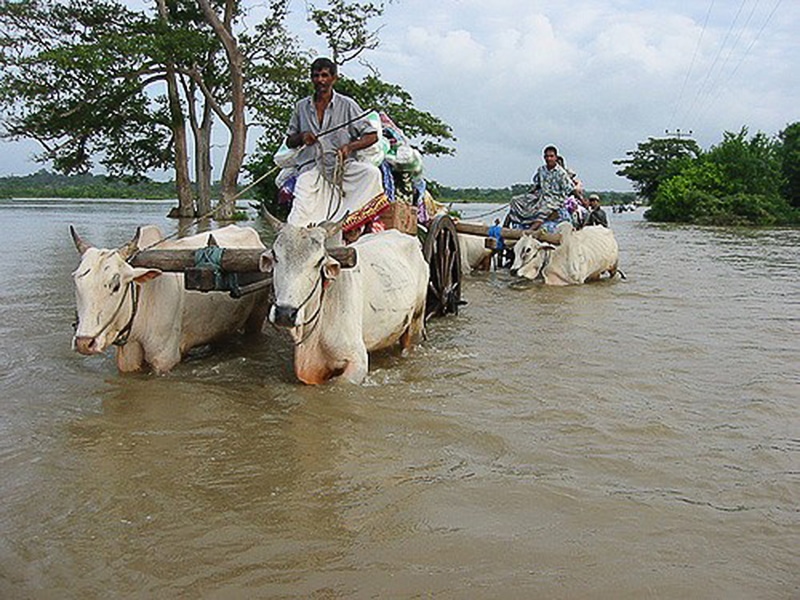Women bear the brunt of climate-forced migration
In a recent article, the International Organisation for Migration (IOM) stated in 2014, “Environmental migration is a gendered process, but discussions within public, policy, and academia regarding environmental migration are often gender-neutral, few studies making the link between migration, environment and gender.”

A family from Panama, Sri Lanka is driven out of their home by floodwaters during the 2004 Indian Ocean tsunami. Photo: Mangala, CC BY-NC-ND 2.0
According to the IOM, “vulnerabilities, experiences, needs and priorities of environmental migrants vary according to women’s and men’s different roles, as do responsibilities, access to information, resources, education, physical security and employment opportunities.”
However, “The struggles of women environmental migrants have been documented but there is no statistical data to formulate effective policies.” What is known is that the IOM’s 2016 Atlas of Environmental Migration, “the latest and most exhaustive study on the subject, claims that in 2015, 19 million people were newly displaced due to climate disasters globally. This figure does not even include displacement from drought and slow onset environmental degradation. Overall, one billion out of the planet’s 7 billion people are presently on the move, either within countries or beyond borders.
Read the full article at Eco-Business here.
